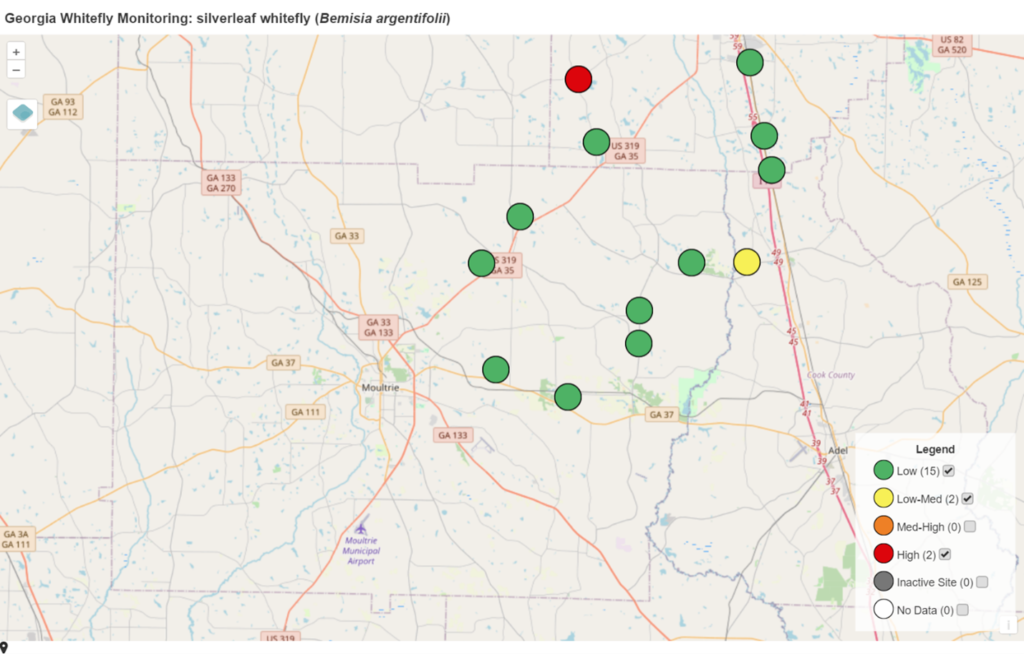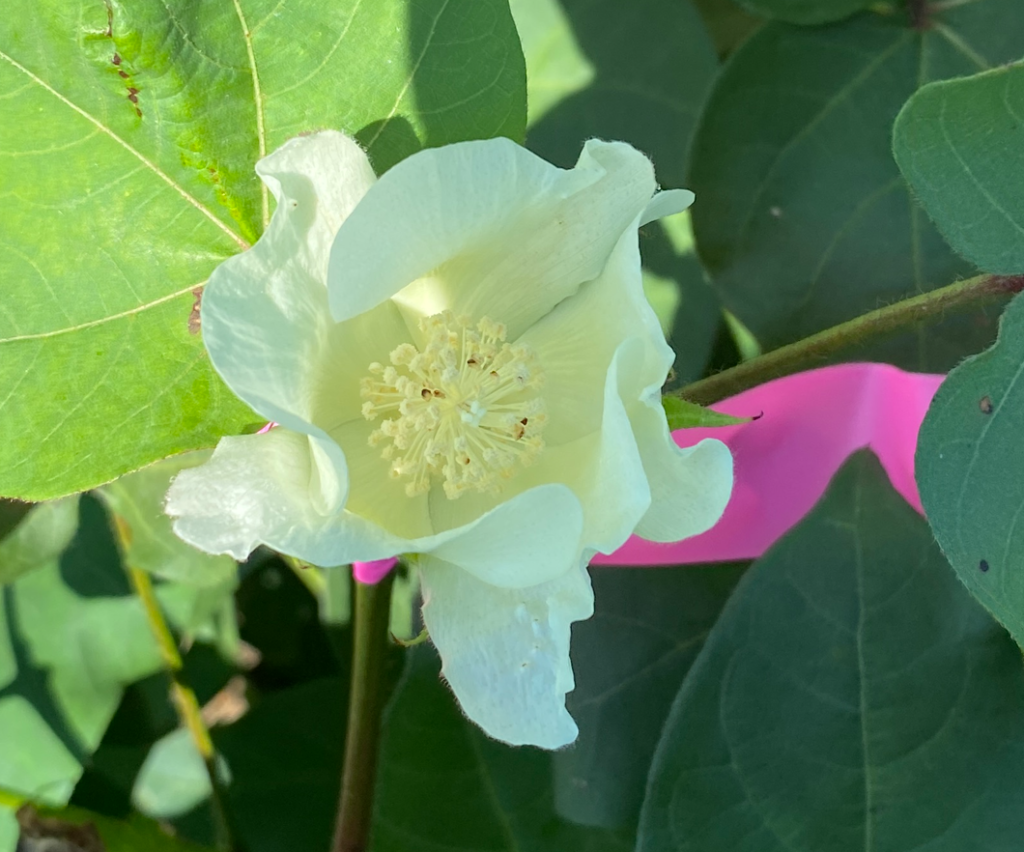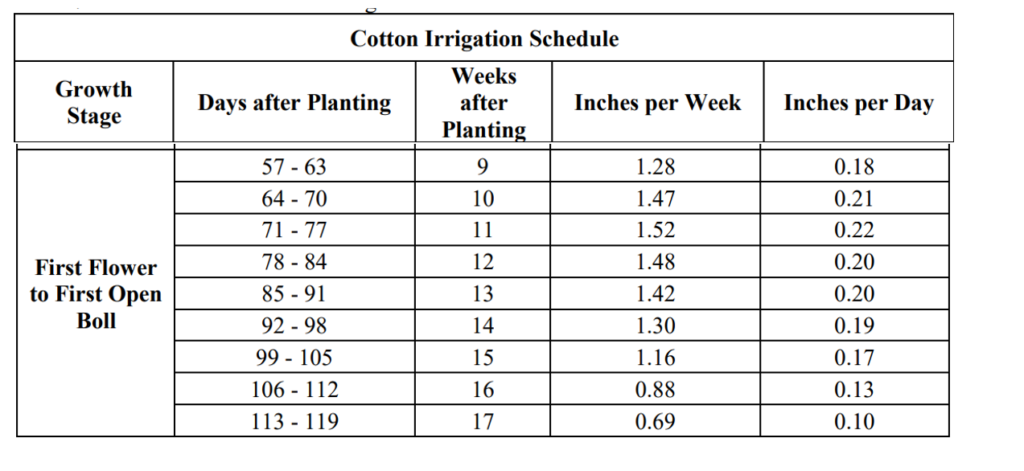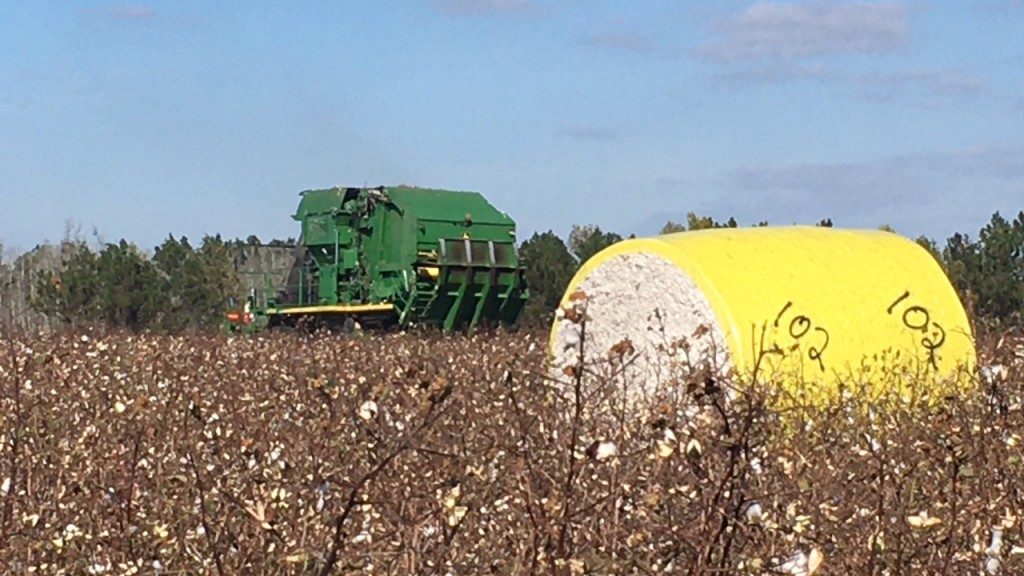It was another exciting week in Colquitt County agriculture. A good rain will sure help cotton and peanut growers. The cotton defoliation and peanut maturity meeting is coming up on August 29, 2024.

Below is the crop progress and condition of the Georgia cotton and peanut crop as of August 11, 2024. This report comes out every week and is available here.

The USDA Crop Progress and Condition of the cotton and peanut crop in Georgia as of August 11, 2024. If you would like to look at this full report it is available here.


The current drought monitor which was released on August, 15, 2024. According to the drought monitor, 86% of Georgia is not experiencing any drought conditions.

Below is the accumulated precipitation (in) for Georgia reported as percent of 1991-2020 normals from August 1 to 17, 2024. Colquitt County ranges from 75 to 200% of normal due to the tropical system that occurred at the beginning of the month.

The illustration below shows the daily cumulative rainfall for this month (Aug 1 to Aug 17, 2024) from the UGA Weather Station at the Sunbelt Ag Expo. It does not take long for the moisture to leave us. Evapotranspiration rates ranged from 0.22 to 0.25 inches per day for the last week (August 11-17, 2024), according to the Expo weather station.

Cotton: The cotton crop ranges from 4th week of bloom to open boll. Whitefly populations in cotton have increased across the county. Growers, scouts, and consultants need to be looking for whiteflies and treat fields accordingly. Below is the whitefly trap data from Dr. Phillip Roberts, UGA Cotton Entomologist, for the past week. Table 1 below shows whitefly captures from 6 locations in the county for the last 7 weeks. Tanner Wilson, UGA Colquitt County ANR Educator, monitors these sticky traps.


Scouts need to follow this method to check for whiteflies: 1) Count down from the terminal of the plant to the 5th vegetative leaf (starting with any leaf that is the size of a quarter or bigger), 2) Slowly turn the 5th leaf over to view the underside of the leaf, 3) See if there are any immature whiteflies present. If 50% or more of the 5th leaves checked have multiple immatures on them, then treatments should be started.
Dirty blooms! Dirty blooms were a topic that has come up this past week. If you observe dirty blooms, it would be a good idea to do drop cloth samples, which is our best sampling method for immature plant bugs. Black drop cloths are the best tool to detect immature plant bugs. During bloom, our drop cloth threshold is 3 plant bugs per 6 row feet.

What about spider mites? The threshold for mites is “apply when 50% of plants are symptomatic and populations are increasing”. So, what is a symptomatic plant? Spider mites are very small and feed on the underside of leaves, often in the folds of the leaf or near the base of the leaf where it is attached to the petiole. Early symptoms include yellow spots or stippling on the upper leaf surface, especially on the folds of the leaf. These early symptoms are what we should be scouting for. In time areas of leaves which are damaged will turn reddish and if populations are high and the mites are not controlled, damaged leaves may defoliate. When scouting it is important that you confirm the presence of live mites on damaged leaves which will require magnification with a hand lens. Severely damaged leaves (reddish symptoms) may no longer have mites so be sure to check leaves with mild symptoms of injury.
Growers do not need to get behind on cotton irrigation. Since we have an early and late crop due to the weather in May, a lot of the cotton crop is nearing or is at peak water demand. As the crop ranges from 4th week of bloom to open boll, please keep in mind that the time to consider irrigation termination in cotton is when the crop reaches 10% open across the field.


What about irrigating my peanuts? According to Dr. Wes Porter, the illustration below shows the water use for peanuts in August.

I keep on getting questions about white mold as the crop progresses toward the end. Peanuts range from 70 to 130 days old which makes white mold control a challenge. Here are some suggestions from Dr. Bob when it comes to white mold.
1. Determine that the problem truly is white mold and not some other problem that is causing wilt or, as in the case of “false white mold”, the presence of a white fungal growth in the field. Diseases like tomato spotted wilt and Diplodia collar rot can cause similar symptoms as can “droughty” areas of a field. “False white mold”, caused by the fungus Phanerochaete, looks much the same as “true” white mold but later turns yellow-orange; false white mold does not damage the crop.
2. Determine the extent of the disease. In 2024, some level of white mold is likely to be present in nearly every field. Finding a small amount of white mold is not unusual and does not mean that there is a problem with a fungicide program. For example, it is difficult for ANY fungicide program to stop individual plants from being affected; the mark of a problem with white mold control occurs when the disease spread, “burns”, down the row. “Hits” of white mold about the size of a dinner plate indicate that the disease is at least contained. A “jailbreak” has occurred when the disease begins to run up and down a row.
3. Recognize that poor management of white mold does not always mean that the fungicide that has been applied is ineffective. Here are some important factors that can limit the control of white mold, despite use of an effective fungicide. A) The timeliness of fungicide applications. Delays in applying fungicides for any reason to manage white mold can result in outbreaks of the disease. B) The weather at time of application. Dry weather, especially in fields without irrigation, can inhibit the fungicide from reaching the target (crown and limbs of the plant). The fungicide is there and is effective, but without some help for movement, may not come in contact with the white mold fungus. Hot and dry conditions may also push the white mold fungus underground which makes managing white mold even more difficult.
4. Growers can maximize control of white mold by timely applications of effective fungicides. Critical components of a “timely” application include the number of days since the last application (typically 14 days) and the time until the next rain or irrigation event. When white mold becomes problematic, growers may “tighten” the spray interval from 14 days down to 10-12 days between applications. Irrigation is most helpful in redistributing fungicides for white mold control when it occurs within 12 to 24 hours after application.
5. Growers can maximize white mold control by increasing spray volume (I believe that 10 gal/A is a minimum) and by applying fungicides at night when leaves are folded up. Such allows a better penetration of the canopy.
6. Should growers switch fungicides? The “cornerstones” of white mold control tend be the applications that are made at approximately 60 and 90 days after planting. Where growers are on a long rotation, e.g., peanuts last in a field 5 or more years ago, or where a more resistant variety like ‘Georgia-12Y’ is planted, growers have the option of a wide variety of “white mold” fungicides to choose from. Where other varieties are planted, or on shorter rotations, growers should consider fungicides like Elatus, Excalia, Convoy, and Umbra at appropriate rates. Between 60 and 90 days, and after 90 days, growers may want to consider fungicides like tebuconazole, azoxystrobin, Fontelis, Provost Silver, and others for additional control. If a grower feels that he or she is not getting the control of white mold that is expected, the grower should consider conditions at time of applications and perhaps adjusting the rate of the fungicide and the fungicide itself.
Have a great week,
Jeremy M. Kichler
Colquitt County Extension Coordinator
The University of Georgia Cooperative Extension does not endorse or guarantee the performance any products mentioned in this update.
